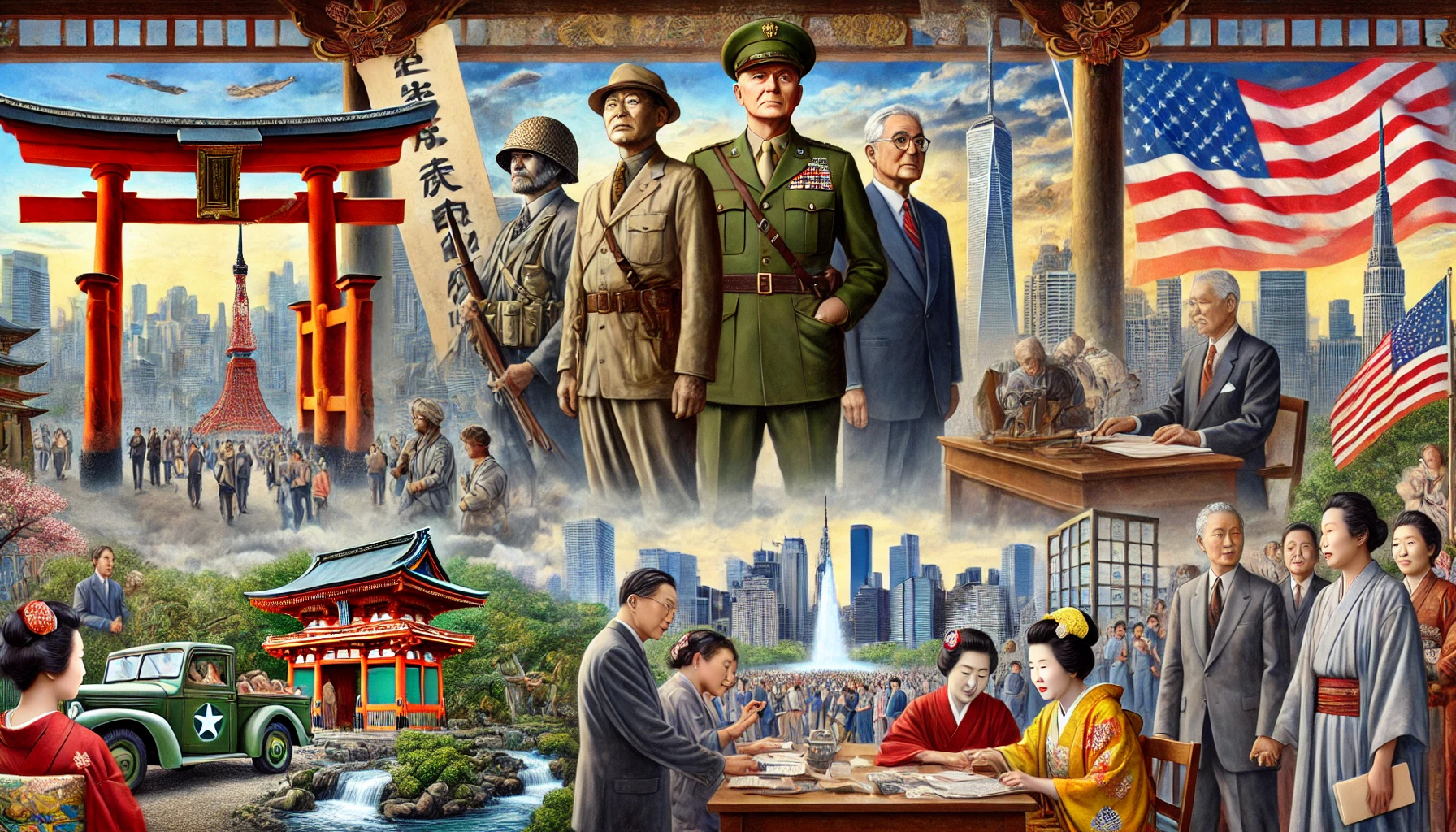The American Occupation of Japan (1945 -1952)
The forced democratisation of Japanese society

From chaos to rebirth: the American occupation of Japan (1945-1952) transformed the country into a modern democracy, laying the foundations for its extraordinary economic and cultural development - Image generated with AI
The American occupation of Japan was a period of great interest in East Asian history, between the end of World War II and 1952. After the devastating defeat that culminated with the bursting of the two American atomic bombs on Hiroshima and Nagasaki, Japan was militarily occupied by American forces who, under the leadership of General Douglas MacArthur, landed and occupied the key population centres of the Japanese islands, including Tokyo.
The objectives of the occupation, which lasted seven long years, were twofold: demilitarisation and democratisation to prevent future risks to American national interests.
The Imperial Japanese Army was disbanded and, under strong American pressure, a new constitution was approved in 1947, introducing the famous Article 9, which categorically forbade Japan from maintaining armed forces for purposes of aggressive warfare. Emperor Hirohito lost his actual powers and was relegated to a purely symbolic role in his palaces, although the figure of the emperor was retained in contemporary Japan.
On the political level, political parties and an American-style parliament were introduced, women were granted the right to vote and the first democratic multi-party elections were held. At the same time, there was a vast educational reform aimed at eradicating the old neo-imperial nationalism and replacing it with a focus on science, civics and human rights.
Japanese society quickly began to adopt western lifestyles, from fashion to television to cultural traditions. While maintaining strong ties to its national identity, Japan soon developed into a successful capitalist country with a flourishing technology industry and a steadily expanding market.
The American military occupation ended in 1952 with the Treaty of San Francisco, which ended the American military presence. Japan still remains closely linked to the Western economic and political sphere.
Michael Schaller. The American Occupation of Japan: The Origins of the Cold War in Asia. Oxford: Oxford University Press, 1985.
John W. Dower. Embracing Defeat: Japan in the Wake of World War II. New York: W. W. Norton & Company, 1999.
2025-02-08
Francesco Toniatti
